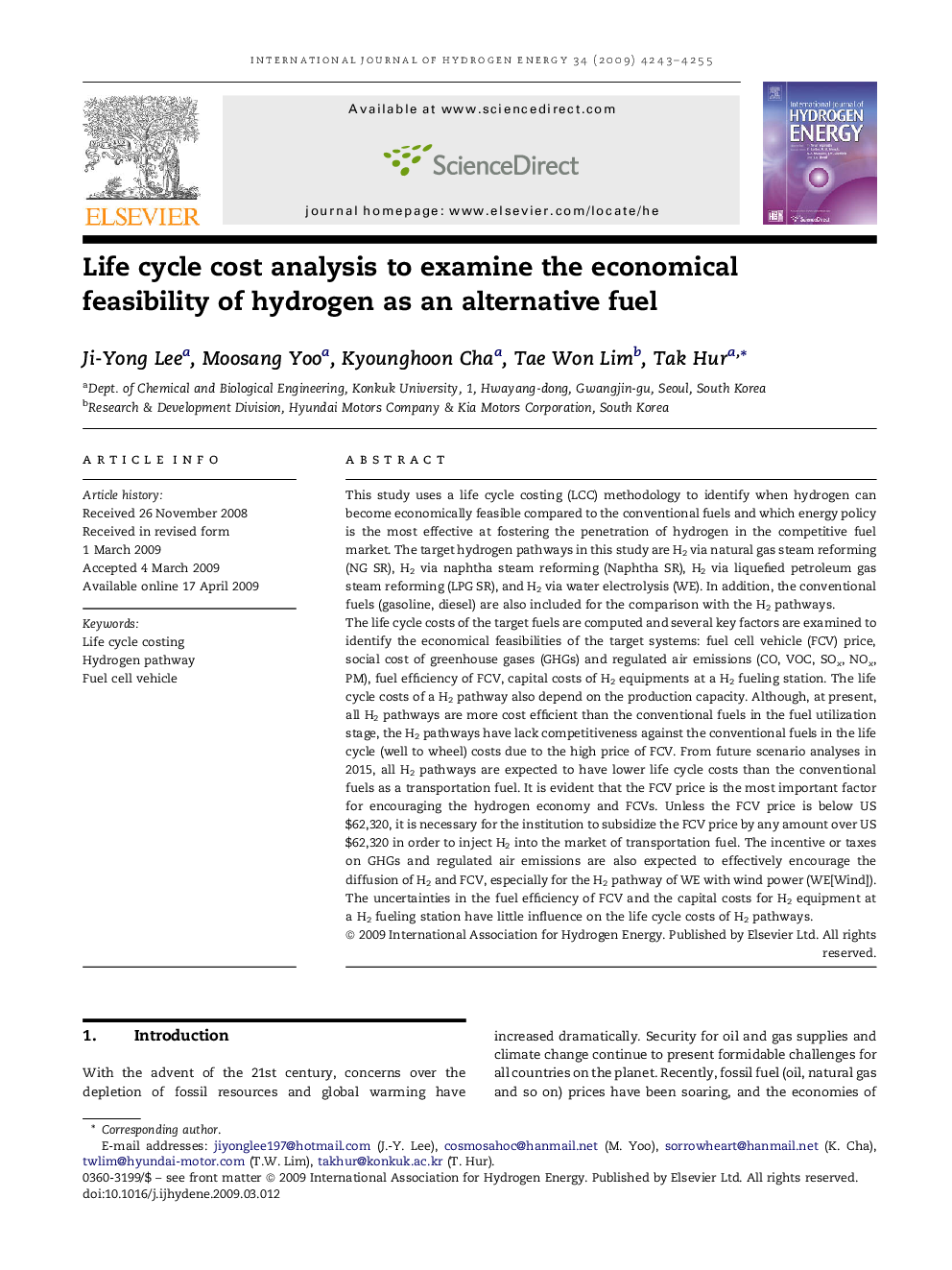| Article ID | Journal | Published Year | Pages | File Type |
|---|---|---|---|---|
| 1273832 | International Journal of Hydrogen Energy | 2009 | 13 Pages |
This study uses a life cycle costing (LCC) methodology to identify when hydrogen can become economically feasible compared to the conventional fuels and which energy policy is the most effective at fostering the penetration of hydrogen in the competitive fuel market. The target hydrogen pathways in this study are H2 via natural gas steam reforming (NG SR), H2 via naphtha steam reforming (Naphtha SR), H2 via liquefied petroleum gas steam reforming (LPG SR), and H2 via water electrolysis (WE). In addition, the conventional fuels (gasoline, diesel) are also included for the comparison with the H2 pathways.The life cycle costs of the target fuels are computed and several key factors are examined to identify the economical feasibilities of the target systems: fuel cell vehicle (FCV) price, social cost of greenhouse gases (GHGs) and regulated air emissions (CO, VOC, SOx, NOx, PM), fuel efficiency of FCV, capital costs of H2 equipments at a H2 fueling station. The life cycle costs of a H2 pathway also depend on the production capacity. Although, at present, all H2 pathways are more cost efficient than the conventional fuels in the fuel utilization stage, the H2 pathways have lack competitiveness against the conventional fuels in the life cycle (well to wheel) costs due to the high price of FCV. From future scenario analyses in 2015, all H2 pathways are expected to have lower life cycle costs than the conventional fuels as a transportation fuel. It is evident that the FCV price is the most important factor for encouraging the hydrogen economy and FCVs. Unless the FCV price is below US $62,320, it is necessary for the institution to subsidize the FCV price by any amount over US $62,320 in order to inject H2 into the market of transportation fuel. The incentive or taxes on GHGs and regulated air emissions are also expected to effectively encourage the diffusion of H2 and FCV, especially for the H2 pathway of WE with wind power (WE[Wind]). The uncertainties in the fuel efficiency of FCV and the capital costs for H2 equipment at a H2 fueling station have little influence on the life cycle costs of H2 pathways.
